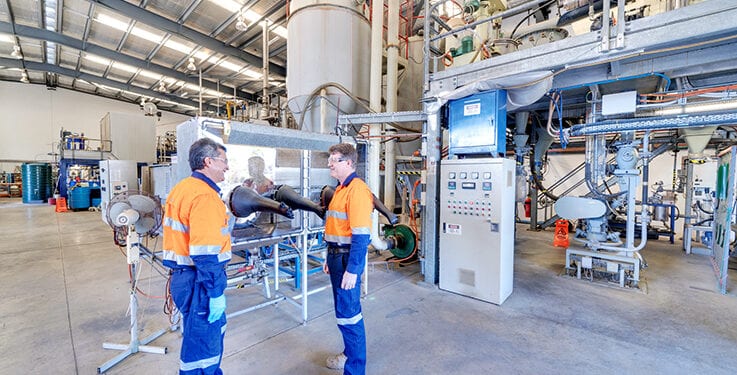Subsidiary VSPC Successful In Reducing Cathode Material Costs
Lithium Australia’s (ASX:LIT) subsidiary VSPC Ltd has produced high-purity, battery-grade iron oxalate made from various iron sources, providing the potential for up to 10% in savings in chemical costs for the manufacture of lithium ferro phosphate (‘LFP’) cathode powder.
In October 2019, VSPC initiated a project to explore low-cost raw-material options for its proprietary process for cathode material synthesis at its Brisbane research and development facility.
The project is co-funded by the AMGC (Australian Manufacturing Growth Centre), a not-for-profit organisation established by the Australian federal government to support the development of world- leading advanced manufacturing within Australia.
Project objectives included:
- Demonstrate the technical feasibility of producing advanced LFP cathode material via an optimised process that, significantly, uses less chemical reagents.
- Evaluate the techno-economic feasibility of LFP synthesis using lower-cost raw materials such as iron sulphate, iron oxides and lithium phosphate derived from several sources, among them:
- mixed metal dust derived from spent lithium-ion batteries by 90% Company-owned subsidiary Envirostream Australia Pty Ltd, a mixed-battery recycling entity located in Melbourne, Victoria.
- the Company’s patented SiLeach process (which targets lepidolite); and
- the Company’s LieNA® process (which targets fine and/or low-grade spodumene).
With stage 3 of its programme now complete, VSPC has confirmed:
- A new process for the production of high-purity, battery-grade iron oxalate has been developed and demonstrated at laboratory scale, using an optimised acid digestion of low-cost iron ore, including haematite and magnetite, as well as synthetic iron oxides.
- Cost-modelling of the new process suggests that a net reduction of 5-10% in the cost of LFP chemical inputs can be achieved via in-house iron-oxalate production. This confirms VSPC’s initial cost estimates from stage 2.
- The process, which has produced battery-grade iron oxalate from a variety of iron sources including iron ores and industrial waste products with widely varying impurity levels (between 5% and 20%), has been highly effective in eliminating the impurities, as shown in the table below. This is significant, as it indicates that iron streams of variable quality, including iron-rich waste from several industrial sources, can be used as feed for the process.
Lithium Australia managing director, Adrian Griffin, said the process is cost-efficient in terms of its utilisation of low-cost iron oxides and complete usage of acid reagents. Other processes, such as the synthesis of iron oxalate from iron sulphate, incur costs related to the disposal of waste acid.
“Safety, cost and performance will be the drivers for the lithium ion batteries of the future and we are already witnessing a significant shift in the direction of LFP to optimise those important characteristics,” Mr Griffin said.
“The ability to utilise low-cost feed materials for the production of LFP batteries puts Australia one step closer to becoming a competitive location for battery production.
“The programme, which is co-funded by the Australian Manufacturing Growth Centre, augments VSPC’s achievements in the production of high-capacity LFP derivatives which provide the potential for far greater safety while maintaining energy densities comparable with more common lithium ion battery chemistries.”












